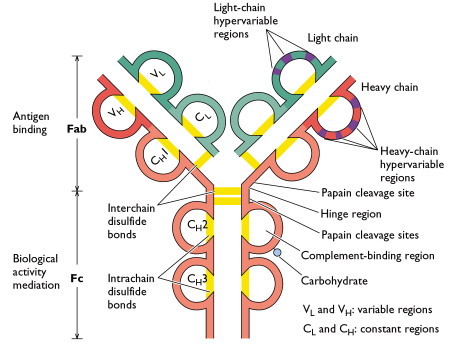Antibody Structure
An antibody, also known as an immunoglobulin, contains of two identical heavy chains and two identical light chains connected by disulfide bonds. Heavy chains include one variable (VH) domain followed by a constant domain (CH1), a hinge region, and two more constant (CH2 and CH3) domains. Light chains are composed of one variable (VL) and one constant (CL) domain,as depicted in picture. Each antibody contains an paratope(Antigen binding site) that is specific for one particular epitope on an antigen, allowing to bind together with precision.

Antibody production
After stimulated by antigen, B cells product antibodies that specific to antigens. Blood serum which contains of antibodies is called antiserum. Each B cell only be introduced to product relevant antibodies that is specific to one antigenic determinant. If various of antigens or antigen with many different antigenic determinants are introduced to body, all kinds of B cell product relevant antibodies that exist in serum.
Antiserum in immunoassay is made by animals such as rabbit, sheep or horse, when they are introduced antigens. B cell which can product antibody fuse with tumor cell which is fertile to be a hybridoma. It is separated with other cells and secret monoclonal antibodies (MAb) in vivo or in vitro. MAb is specific to one hapten, so specificity is very high. Usually, MAb is secreted by mouse which is vaccinated.
